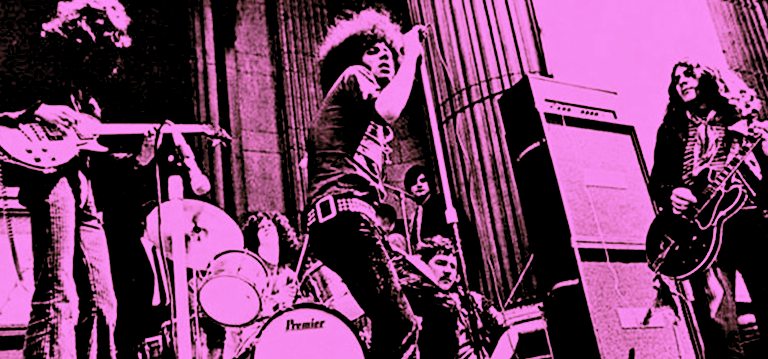Ah, the Pink Fairies. Now there's a name that conjures up a certain… well, let's just say they weren't exactly polishing their halos down at the local vicarage. This lot were less about whimsical sprites flitting through moonlit glades and more about a ragged, raucous energy tearing through the early 70s like a particularly potent strain of narcotic.
Their story wasn't one of meticulously planned career moves or chart-topping aspirations. It was more of a glorious, shambolic eruption from the underground, a defiant two-fingered salute to the prevailing winds of polite society. Picture this: the tail end of the psychedelic era morphing into something altogether grittier, a bit more bruised around the edges. That's the fertile, slightly grubby seedbed from which the Pink Fairies sprang.
You had Twink, a drummer with a pedigree in the Pretty Things and Tomorrow. Alongside him, Mick Farren, a writer, NME journo, and activist with a sharp wit and an even sharper tongue, was initially a guiding force, though his tenure was characteristically turbulent. Then there was Paul Rudolph, a guitarist with a penchant for the expansive and the downright noisy, and Duncan Sanderson on bass, holding down the fort amidst the swirling chaos.
They were part of the Notting Hill, Ladbroke Grove, anarcho-hippy movement, sort of orbiting planet Hawkwind, and of similar persuasions. If you needed a band to play for free to raise money on a flatbed truck for Release or any drug-based charitable organisation, they’d be there.
Their early gigs, I gather, were less polished performances and more like communal freak-outs, fueled by a potent cocktail of youthful rebellion and whatever else could be scored cheap. They weren't chasing Top of the Pops, though they released 4 singles!! They were more interested in tearing down the walls, both literally and metaphorically. Hyde Park free concerts, squatting, a general air of beautiful, chaotic defiance – that was their milieu. England’s template for the dirty hippy.
Their music? Well, it was loud. Raw. Unapologetically so. Think heavy riffs colliding with a punkish energy before punk even had a name. Tracks like "Do It!" became anthems of a certain kind, a call to arms (or at least a call to crank the volume up and annoy the neighbours). Their albums, “What a bunch of Sweeties”, "Never Never Land" and "Kings of Oblivion," captured this raw energy really well, a snapshot of a band operating on its own terms, for better or for worse. They sound largely recorded in one take.
But the thing about the Pink Fairies is that they weren't built for longevity in the conventional sense. They were a product of a specific time and place, a glorious, messy outburst of creativity and rebellion. Lineups shifted, the focus wavered, and the initial fire, perhaps inevitably, flickered. But the spirit, that defiant, anti-establishment energy, that refusal to play by the rules – that's what endures. They were a product of a certain time and place
They might not have conquered the charts - though “Sweeties did get to #48 - in 1972 or filled stadiums in the way some of their contemporaries did. But the Pink Fairies left their mark. They influenced Motorhead and every other band that were disruptors. Were they England’s MC5? Perhaps not as overtly political, but a similarly anarchic band who lived it like they played it. They were a reminder that rock and roll could be more than just entertainment; it could be a statement, a way of life, a glorious, messy, and utterly unforgettable noise in the face of a world that sometimes took itself far too seriously. And for that, they deserve a tip of the hat, even if it's a slightly battered and paint-splattered one.
Don’t forget to boogie and …err…up the pinks!
Sidebar
Ragged, raucous energy tearing through the early 70s...




